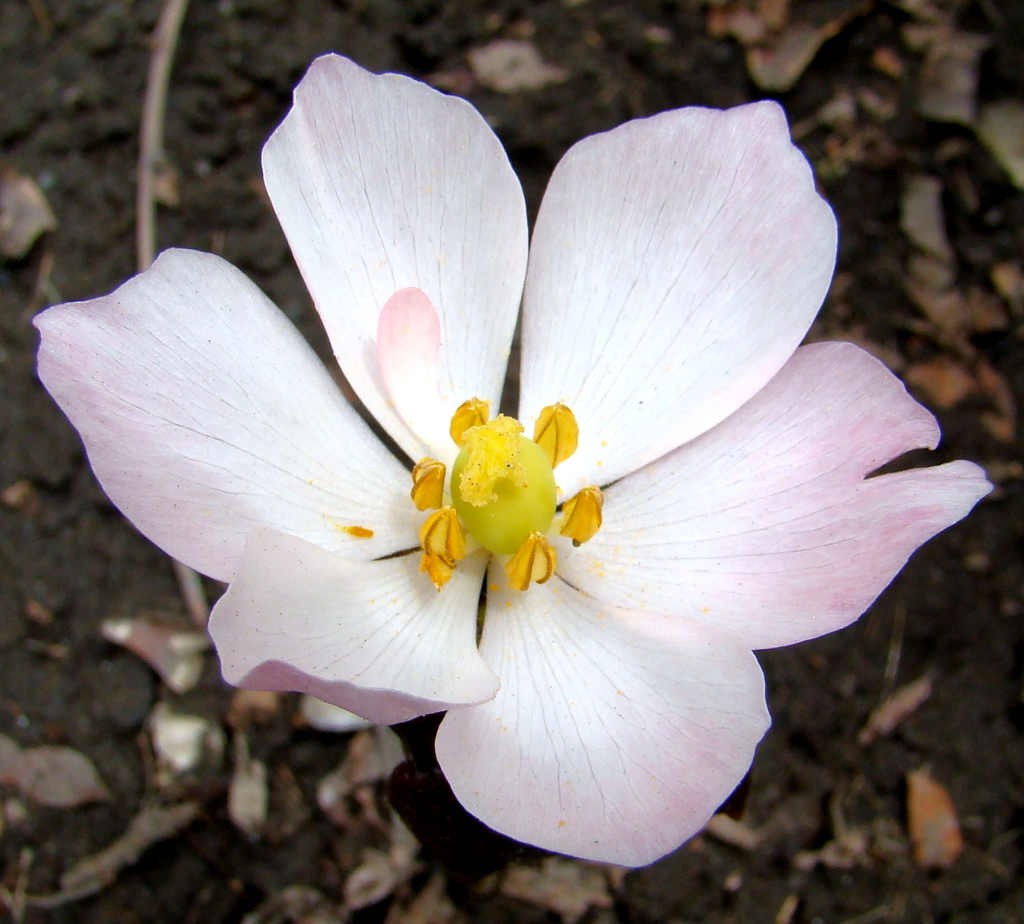
Podophyllum hexandrum (Vankakri)
Podophyllum hexandrum, commonly known as Vankakri, Himalayan Mayapple, or Indian Podophyllum, is a rare and medicinally important herbaceous plant native to the Himalayan region. In the Great Himalayan National Park (GHNP), this species is highly valued for both its ecological role and its traditional uses in local healthcare systems.
Natural Habitat and Occurrence in GHNP
Vankakri is typically found at altitudes between 2,400 and 4,000 meters, often growing in moist, shaded forest undergrowth, alpine meadows, and subalpine thickets. In the Great Himalayan National Park, it thrives in temperate forest zones alongside species like Rhododendron, Aconitum, and Primula. Its natural distribution is limited, which makes its presence in GHNP ecologically significant.
Botanical Description
Podophyllum hexandrum is a perennial herb with large, deeply lobed umbrella-shaped leaves and a solitary pink to reddish flower that blooms between May and July. After pollination, the plant produces a distinctive orange-red fruit, which is mildly sweet and eaten by wildlife, aiding in seed dispersal.
Medicinal Importance
Vankakri has been used for centuries in Ayurvedic and traditional Tibetan medicine. Its rhizomes contain podophyllotoxin, a compound with potent anticancer, antiviral, and antimicrobial properties. Modern pharmaceutical research has recognized its potential in developing drugs for treating genital warts, skin conditions, and certain cancers.
However, due to its slow growth rate and overharvesting for medicinal trade, Podophyllum hexandrum is now considered a vulnerable species, and its collection from the wild is regulated under conservation laws.
| Local name | Galakada, Vankakri |
| Botanical name | Podophyllum hexandrum |
| Family | Berberidaceae |
| Description and uses | It is a perennial herb, 15-40 cm tall. Flowers white to pink. Fruit oblong, pulpy, many seeded. The best season for flowering and fruiting is July- September and it is frequent on moist slopes, of all valleys of GHNP at an altitude of 2400-4000 m.The fruit is used as remedy for cough. The root is used as a purgative. |
Ecological Role
Beyond its medicinal value, Podophyllum hexandrum plays an important role in the GHNP ecosystem. It contributes to soil stabilization in high-altitude slopes and provides food for small mammals and birds that consume its fruit. Its limited distribution and sensitivity to environmental changes make it a good indicator of ecosystem health.
Conservation Measures in GHNP
The Great Himalayan National Park serves as a critical refuge for Podophyllum hexandrum, where it is protected under the park’s strict conservation framework. GHNP’s designation as a UNESCO World Heritage Site underscores the importance of conserving such rare and threatened Himalayan flora. Awareness programs and research initiatives are also helping promote the sustainable use and in-situ conservation of this valuable plant.
Conclusion
Podophyllum hexandrum (Vankakri) is a remarkable Himalayan herb, valued for its powerful medicinal properties and ecological role. Its presence in the Great Himalayan National Park reflects the park’s rich biodiversity and highlights the importance of habitat protection for rare medicinal plants. Conservation of Vankakri ensures the survival of traditional knowledge and supports the future of sustainable herbal medicine in the region.



